When you purchase through links on our site, we may earn an affiliate commission.Here’s how it works.
(Image credit: MAtt Kolalt/ Derek Adams)
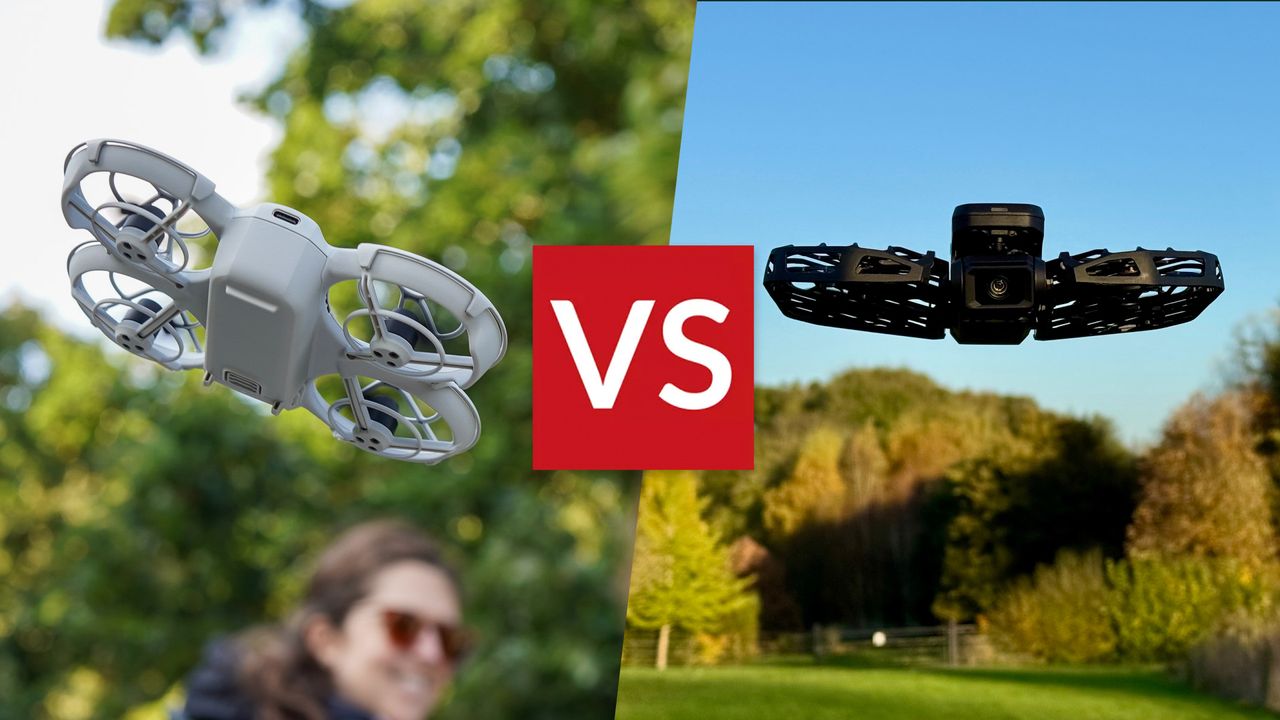
(Image credit: MAtt Kolalt/ Derek Adams)
Jump to category:Price comparisonCombo options and pricingAvailabilityKey specs comparedWhat’s so special about these drones?Overall designFeaturesFlight performanceCamera performanceVerdict
Jump to category:Price comparisonCombo options and pricingAvailabilityKey specs comparedWhat’s so special about these drones?Overall designFeaturesFlight performanceCamera performanceVerdict
When it comes to compact hand-launched drones, both the DJI Neo and HoverAir X1 Pro have garnered a wealth positive reviews for their innovative in-flight features, overall ease of use and unique set of functionalities that are perfectly tailored for both casual users and content creators.
TheHoverAir X1 Pro, meanwhile, sets itself apart with its ultra-lightweight foldable design, focus on simplicity and ability to shoot in 4K at up to 60 frames per second. Both models are ideal for users looking for a portable and intuitive option for quick, hands-free videography.
Since both of these models are capable of shooting video in 4K, they both well deserve an elevated slot in our guide to thebest drones. But which one’s the model for you?
DJI Neo vs HoverAir X1 Pro
Price comparison
Therefore, if budget is of primary concern but you still want a drone – perhaps your first ever drone – that will fly off your hand, follow you around like a trusty pet and capture amazingly good close-quarters footage for its size, you can stop right here and order a Neo right away. You will not be disappointed – and nor will your children.
However, if you have some extra readies in the pocket and you want a drone that folds into a tidier package while having a few tantalising extras like rear obstacle avoidance, more onboard storage, higher wind resistance, better customisation and higher tracking speeds, the HoverAir X1 Pro is about as good as it currently gets.
Sign up to the T3 newsletter for smarter living straight to your inbox
Get all the latest news, reviews, deals and buying guides on gorgeous tech, home and active products from the T3 experts
Today’s best DJI Neo and HoverAir X1 Pro dealsDJI Neo$229ViewSee all pricesHoverAir X1 Pro$499ViewSee all pricesWe check over 250 million products every day for the best prices
Today’s best DJI Neo and HoverAir X1 Pro dealsDJI Neo$229ViewSee all pricesHoverAir X1 Pro$499ViewSee all pricesWe check over 250 million products every day for the best prices
Today’s best DJI Neo and HoverAir X1 Pro dealsDJI Neo$229ViewSee all pricesHoverAir X1 Pro$499ViewSee all pricesWe check over 250 million products every day for the best prices
Today’s best DJI Neo and HoverAir X1 Pro deals
DJI Neo$229ViewSee all pricesHoverAir X1 Pro$499ViewSee all prices
DJI Neo$229ViewSee all prices
DJI Neo$229ViewSee all prices

DJI Neo
DJI Neo

$229View
$229
$229
See all prices
HoverAir X1 Pro$499ViewSee all prices
HoverAir X1 Pro$499ViewSee all prices
HoverAir X1 Pro
HoverAir X1 Pro

$499View
$499
$499
See all prices
We check over 250 million products every day for the best prices
We check over 250 million products every day for the best prices
Combo options and pricing
If you splash the cash you can sample the joys of FPV flying with the DJI Neo Motion Combo(Image credit: DJI)
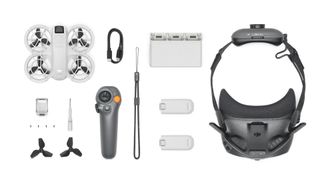
If you splash the cash you can sample the joys of FPV flying with the DJI Neo Motion Combo
If you splash the cash you can sample the joys of FPV flying with the DJI Neo Motion Combo
(Image credit: DJI)
Both of these drones are available in a number of combination packages and, as a result, prices increase the higher up the accessory list you go.
Let’s start with the DJI Neo. This little bird is available in three different combos: theStandarddrone (£169) with single battery and propellor guards but no physical controller, aFly More Combo(£299) comprising the drone, two batteries, propellor guards and DJI’s excellent RC-N3 hand controller and, for those who want to experience some FPV thrills, theMotion Fly More Combo(£449) which comes with the drone, DJI’s N3 goggles, RC Motion 3 hand controller, three batteries, a charging hub and propellor guards.
The HoverAir X1 Pro Cycling Combo is a perfect choice for cycling, mountaineering and capturing life on the move(Image credit: HoverAir)
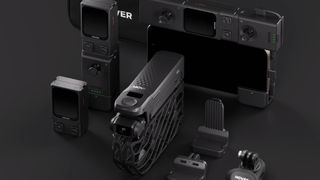
The HoverAir X1 Pro Cycling Combo is a perfect choice for cycling, mountaineering and capturing life on the move
The HoverAir X1 Pro Cycling Combo is a perfect choice for cycling, mountaineering and capturing life on the move
(Image credit: HoverAir)
This retails at £629 and includes all the above plus an extra battery, charging hub, 65W adaptor and a decent zippered case. Then there’s theWinter Combo(£825). This pack includes the X1 Pro, three batteries, a charging hub, a shoulder bag, a PowerCase for charging on the go and a set of ND Filters.
Want the ultimate drone tracking package for your cycling exploits? That’ll be theCycling Combo(£839). This pack includes an X1 Pro, a Beacon, shoulder bag, handlebar mount, three batteries, charging hub and power adapter.
However, if you’re a skier, snowboarder or mountaineer, then theSkiing Combo(£1,039) is the way to go. This combo contains a veritable tranche of goodies, including the drone, a Beacon & JoyStick bundle, a PowerCase, a shoulder bag, three batteries, a charging hub, ND filters, plus a magnetic clothing clip and adaptor mount. Phew!
Availability
When it comes to UK availability, the DJI Neo is much easier to source. You can currently nab most variants of this natty little drone from a number of online stores. But if you just want the basic no-controller model for £169 dry, tryDJIdirect orAmazon,Currys,Argos,Tesco,andJessops. And if you’re in the States, tryDJIandAmazon,where it’s shifting for a very reasonable $199.
Since the HoverAir X1 Pro has only just been launched, availability is currently restricted to the HoverAir website. If in the UK, head toHoverAir, where the base model sells for £459 and if in the US, go to the USHoverAirsite and grab one for $499.
Key specs compared
Swipe to scroll horizontallyRow 0 - Cell 0DJI NeoHoverAir X1 ProWeight135g191.5gDimensions (folded)Not applicable105x149x34mmDimensions (unfolded)130×157×48.5mm173x149x39mmMax speed35mph (Manual mode)37mph (in bursts)Max flight time17 mins16 minsBasic flight distance50m500mEnhanced flight distance4.3 miles0.62 milesMax wind speed resistanceLevel 4 (18mph)Level 5 (24mph)Built-in GPSYesNoObstacle sensingNoneRear proximityCamera gimbalOne-axisTwo-axisCamera sensor1/2-inch1/2-inchLens FOV117.6˚104˚Photo format12 megapixel JPEG12 megapixel JPEGVideo resolutionUp to 4K at 30fpsUp to 4K at 60fpsVertical videoNoYesInternal storage22GB32GBBuilt-in MicroSD?NoYes
Swipe to scroll horizontally
Row 0 - Cell 0DJI NeoHoverAir X1 ProWeight135g191.5gDimensions (folded)Not applicable105x149x34mmDimensions (unfolded)130×157×48.5mm173x149x39mmMax speed35mph (Manual mode)37mph (in bursts)Max flight time17 mins16 minsBasic flight distance50m500mEnhanced flight distance4.3 miles0.62 milesMax wind speed resistanceLevel 4 (18mph)Level 5 (24mph)Built-in GPSYesNoObstacle sensingNoneRear proximityCamera gimbalOne-axisTwo-axisCamera sensor1/2-inch1/2-inchLens FOV117.6˚104˚Photo format12 megapixel JPEG12 megapixel JPEGVideo resolutionUp to 4K at 30fpsUp to 4K at 60fpsVertical videoNoYesInternal storage22GB32GBBuilt-in MicroSD?NoYes
What’s so special about these drones?
(Image credit: Future)
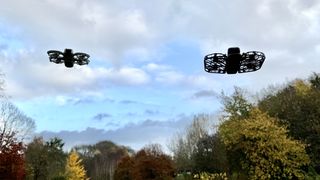
(Image credit: Future)
But everything went pear shaped even before it hit the streets because the developer ran out of crowd-funded cash and couldn’t deliver on its numerous promises. The same thing occurred with the European Zano drone which bombed in a big way well before getting off the ground.
So what do these self-proclaimed ’selfie’ drones actually do? Quite a lot as it happens. Both the Neo and HoverAir X1 Pro are launched from the hand and were ostensibly designed to capture close-up images and video of the user while out and about.
Think of them as personal flying camera operators who follow you everywhere, capturing the settings you’re in and snapping group shots and the like.
In fact, snapping family shots and videos is one of their best party tricks because it means that, for once, everyone is in the picture, including the person who is normally behind the camera and, therefore, rarely in any family photos.
However, it’s not just hovering shots these two little tykes are so good at, it’s following the user at speeds of up to 20mph and sometimes higher from the front or the rear, and at a variety of distances up to around six metres.
It means you can hop on your bike and hand launch the drone, and it will stick like a limpet as you duck and dive through the woods. In fact, both models are exceptionally good at following the user accurately without crashing into anything, almost as if they have front-mounted obstacle avoidance, which they don’t.
Phew, that was close!(Image credit: Future)

Phew, that was close!
Phew, that was close!
(Image credit: Future)
Along with static and fast moving tracking shots, both of these models will also perform a series of set-piece shots like ’Orbit’ (a perfect 360˚ circle around the user), ‘Zoom Out’ (the drone moves away from the user), ‘Bird’s Eye’ (the drone flies straight up for a downward shot of the user).
And the best thing is that both drones automatically switch to video recording mode as soon as they’ve left the hand. In other words, it’s almost impossible to have an unsuccessful flight because you forgot to hit a record button.
As you can see, the HoverAir on the right offers far more tweaks than the DJI Neo on the left(Image credit: Future)

As you can see, the HoverAir on the right offers far more tweaks than the DJI Neo on the left
As you can see, the HoverAir on the right offers far more tweaks than the DJI Neo on the left
(Image credit: Future)
However, when it comes to a wider variety of quick-shot customisation, the HoverAir X1 Pro clinches it. Take Orbit/Circle mode for instance. With the X1 Pro, you can adjust your radius, angle, altitude, orbit direction, zoom, and even vertical shooting. With the Neo, all you get for its similar Circle mode is max distance and camera mode (video or stills).
Overall design
(Image credit: Future)
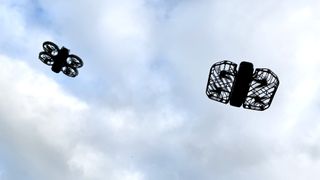
(Image credit: Future)
Although both of these drones are very similar in terms of features and functions, only the one of them folds into a small enough package to fit into a jacket pocket – and that could make the difference between leaving your drone at home and taking it with you.
The HoverAir’s foldability is a stand-out feature that cannot be ignored. When folded it will easily slip inside a winter jacket or summer bag. And when you get to your location, you simply unfold it, launch it off the hand and have it perform a myriad of clever cinematic shots, all within a range of several metres.
The same cannot be said of the DJI Neo which doesn’t fold and is therefore a bit more ungainly when transporting. Yes, it will easily fit in a shoulder bag but it absolutely will not fit in any pocket with an aperture of less than 15.7 cm. It also comes with a camera and gimbal protector that’s impossible to fit in a hurry.
Both of these drones are light as a pair of feathers (DJI Neo – 135g; HoverAir X1 Pro – 191.5g) and both have a cage system around their propellors which makes them extremely safe to fly within a few feet of people. However, steer clear of flying near animals because both models make quite a racket – like an angry swarm of wasps.
Flying options
With the DJI Neo Motion Combo pack you can indulge in a spot of FPV flying(Image credit: DJI)
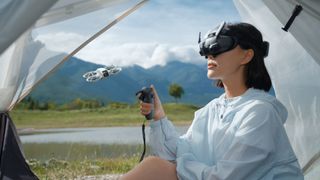
With the DJI Neo Motion Combo pack you can indulge in a spot of FPV flying
With the DJI Neo Motion Combo pack you can indulge in a spot of FPV flying
(Image credit: DJI)
In a break from the autonomous norm, both of these drones can also be flown in a variety of manual ways but the DJI Neo pushes the envelope further in this regard. Let’s look at the most basic functions first. As alluded to above, both the Neo and HoverAir are available is several combo options.
Aside from the aforementioned autonomous flight modes, the Standard variant of both drones can also be flown manually using a pair of virtual joysticks in the accompanying DJI Fly and HoverAir apps (iOSandAndroid). In the case of the DJI Neo, you’re limited to a maximum flight distance of 30 metres and up to 500 metres with the HoverAir X1 Pro.
However, if you opt for the DJI Fly More Combo, which includes the DJI RC-N3 hand controller, you can fly the little GPS-equipped Neo like a one of its bigger stablemates and go well beyond line of sight – up to 4 miles according to DJI. I wouldn’t dare go that far given the Neo’s 17 minute flying time but it’s nice to know that you can, if necessary, fly the Neo to an amazing viewpoint well beyond walking reach.
The HoverAir also offers a physical joystick package that allows you to fly the X1 Pro up to 1km (0.62 miles) away and that’s about as far as anyone one would want to go with this drone, mostly because it isn’t equipped with a GPS sensor like the DJI Neo. Alternatively, you can remove one of the joysticks and fly the X1 Pro using hand motions.
Go for the HoverAir X1 Pro Cycling Combo if you want rock-solid drone tracking(Image credit: HoverAir)
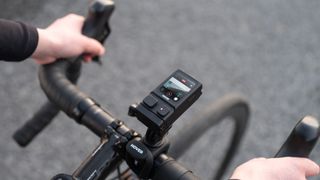
Go for the HoverAir X1 Pro Cycling Combo if you want rock-solid drone tracking
Go for the HoverAir X1 Pro Cycling Combo if you want rock-solid drone tracking
(Image credit: HoverAir)
As a bonus, the joystick package includes the HoverAir Beacon, which you can separate from the two joystick modules to fix to your clothing or bike handlebars. The Beacon was designed for enhanced tracking where standard tracking may fail – like when riding with a group of other cyclists.
That’s about it control wise for the X1 Pro but not the end of it for the DJI Neo. If you’ve always wanted to indulge in a spot of FPV flying while wearing goggles, then the Neo is inarguably the best starting point. With the full Motion Fly More Combo, you can fly the Neo wearing said goggles and control it using DJI’s amazing Motion 3 controller. And once you’ve got the hang of it, switch the drone to manual mode (better known as chaos mode to newbies) for speeds up to and beyond 35mph.
Flight performance
(Image credit: Future)

(Image credit: Future)
The HoverAir’s increased windspeed tolerance is definitely a bonus when it comes to both manual and autonomous control since it holds its trajectory a little more steadily when faced with the odd gust. But on the other hand, I have had one or two issues connecting the HoverAir’s Beacon and Joysticks when out in the field where the DJI’s system has been seamless and very reliable. I do, however, appreciate the HoverAir X1 Pro’s rear obstacle sensor which is a logical place to have it since many drone collisions occur when performing a reverse shot.
There is one element I’ve read about regarding the Neo that could be a little concerning and that relates to DJI’s clever geofencing system. As is the case with all DJI drones, if you are in the vicinity of a large airport, the Neo may not work at all, even in autonomous hand-launch mode. Hopefully this will be fixed as soon as possible because I see no reason why you shouldn’t be able to fly this titchy thing just a few metres away in a restricted zone.
Camera performance
(Image credit: Future)

(Image credit: Future)
This is a difficult one because I’m finding it hard to spot any significant differences in the video and photo quality of these drones though, in most instances, the HoverAir’s imagery does look a bit a sharper and more defined, especially in moving shots. Both shoot in 4K but only the HoverAir is capable of shooting 4K at 60 frames per second (the DJI Neo’s max is 30fps). Having a 60fps option is very handy for any drone because it means you have more scope to slow the final video down in post production without causing a jittery video image.
Although the HoverAir has a 2-axis gimbal against the DJI’s single axis, I have found that both drones produce the same smooth results. Where I have spotted big differences is in their respective colour profiles but even this isn’t cut and dried when it comes to saying which drone is best. For instance, in editing a short video I noticed that the DJI Neo’s colour profile looked more saturated and in some cases more realistic while some of the HoverAir X1 Pro’s imagery needed a tweak in Final Cut Pro to make it less harsh in appearance. But then again, these colour differences seemed to depend on the lighting at the time. In one shot the DJI’s images looked better while in another the HoverAir clinched it.
Neither of these cameras are as good as the one on the DJI Mini 4, let alone DJI’s bigger drones. However, the footage they produce is easily sharp enough for display on a phone, tablet or 15-inch laptop. I’d also say that both models are perfectly suited to all but the most discerning of YouTube and Instagram content creators and, of course, anyone looking to document a holiday or family occasion. Budding cinematographer kids, too, will love either of these models, though as I’ve said above, the DJI Neo is much more in their price bracket and it comes with the option to upgrade to the FPV package.
Verdict
When it comes to effortless portability, customisable features, excellent flight characteristics and improved video frame rates, the HoverAir X1 Pro is a shoo-in. Honestly, if you have a minimum of £500 kicking about, this model is a no brainer.
So, where does this leave the DJI Neo? Well, from an affordability point of view, this thing is incredibly good value, especially in base form. So, as I said right at the start of this comparison, if you just want a personal hand-launched drone to shoot close-up shots of the family on holiday, in the home at Christmas, etc, the Neo is unquestionably the big winner in this contest.
Today’s best DJI Neo and HoverAir X1 Pro dealsDJI Neo$229ViewSee all pricesHoverAir X1 Pro$499ViewSee all pricesWe check over 250 million products every day for the best prices
Today’s best DJI Neo and HoverAir X1 Pro dealsDJI Neo$229ViewSee all pricesHoverAir X1 Pro$499ViewSee all pricesWe check over 250 million products every day for the best prices
Today’s best DJI Neo and HoverAir X1 Pro dealsDJI Neo$229ViewSee all pricesHoverAir X1 Pro$499ViewSee all pricesWe check over 250 million products every day for the best prices
Today’s best DJI Neo and HoverAir X1 Pro deals
DJI Neo$229ViewSee all pricesHoverAir X1 Pro$499ViewSee all prices
DJI Neo$229ViewSee all prices
DJI Neo$229ViewSee all prices

DJI Neo
DJI Neo

$229View
$229
$229
See all prices
HoverAir X1 Pro$499ViewSee all prices
HoverAir X1 Pro$499ViewSee all prices
HoverAir X1 Pro
HoverAir X1 Pro

$499View
$499
$499
See all prices
We check over 250 million products every day for the best prices
We check over 250 million products every day for the best prices

You only need two dumbbells and this 30-minute workout to grow your glutes at home

New Samsung Galaxy S25 marketing images show all phones in close-up detailNew leak reveals more on the Samsung Galaxy S25 Ultra and standard models
New leak reveals more on the Samsung Galaxy S25 Ultra and standard models
